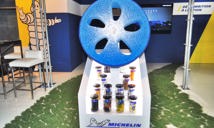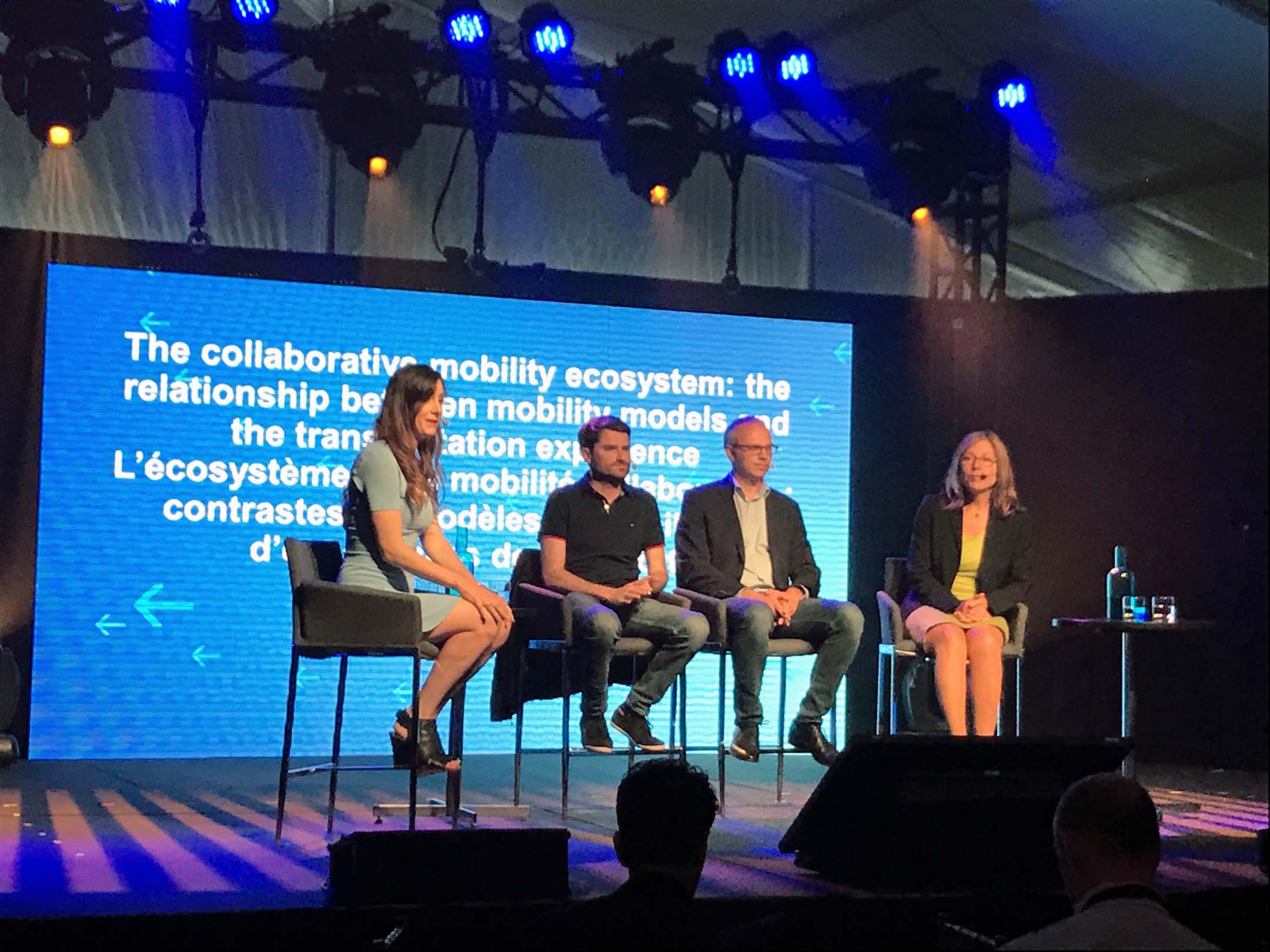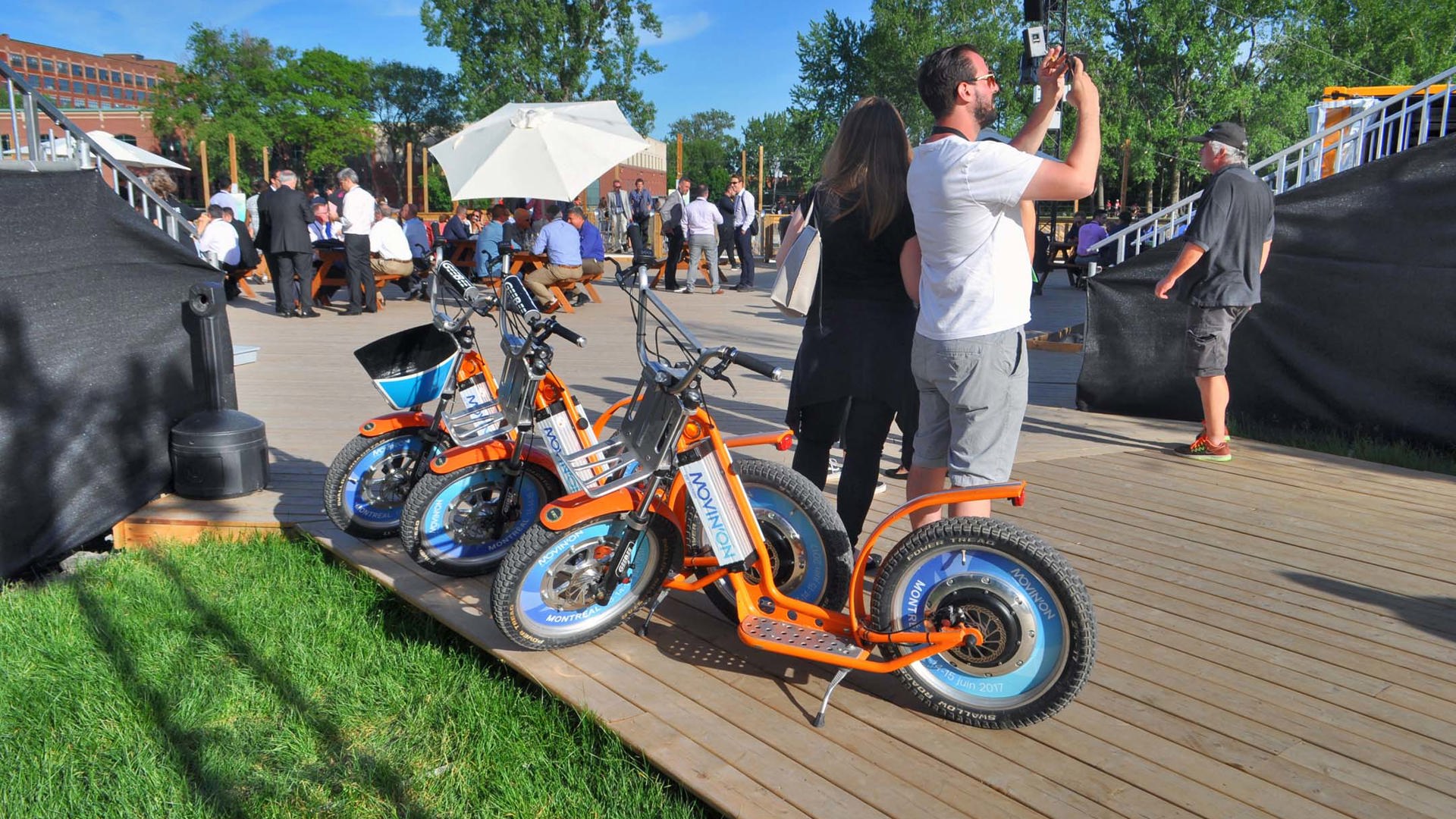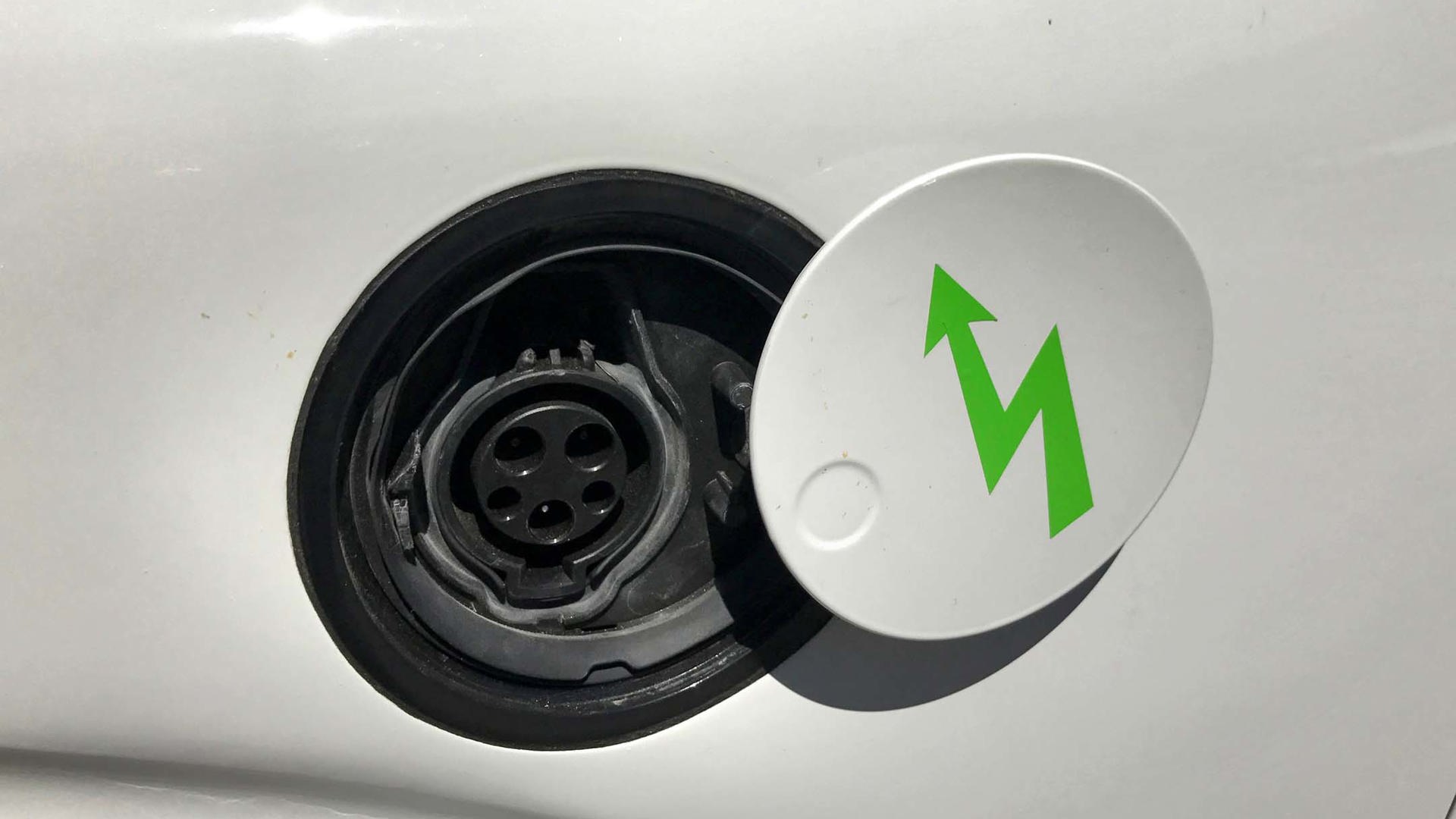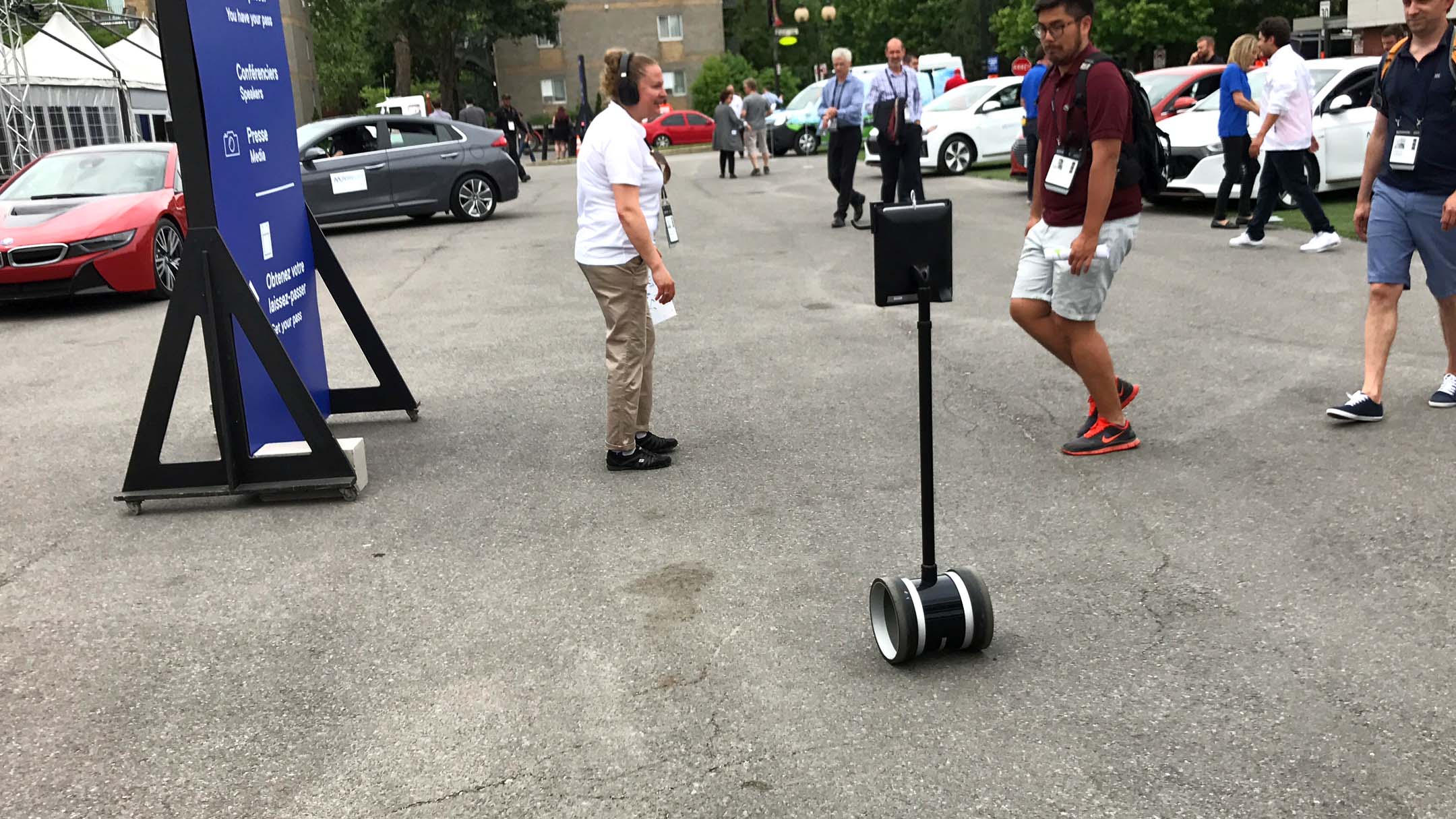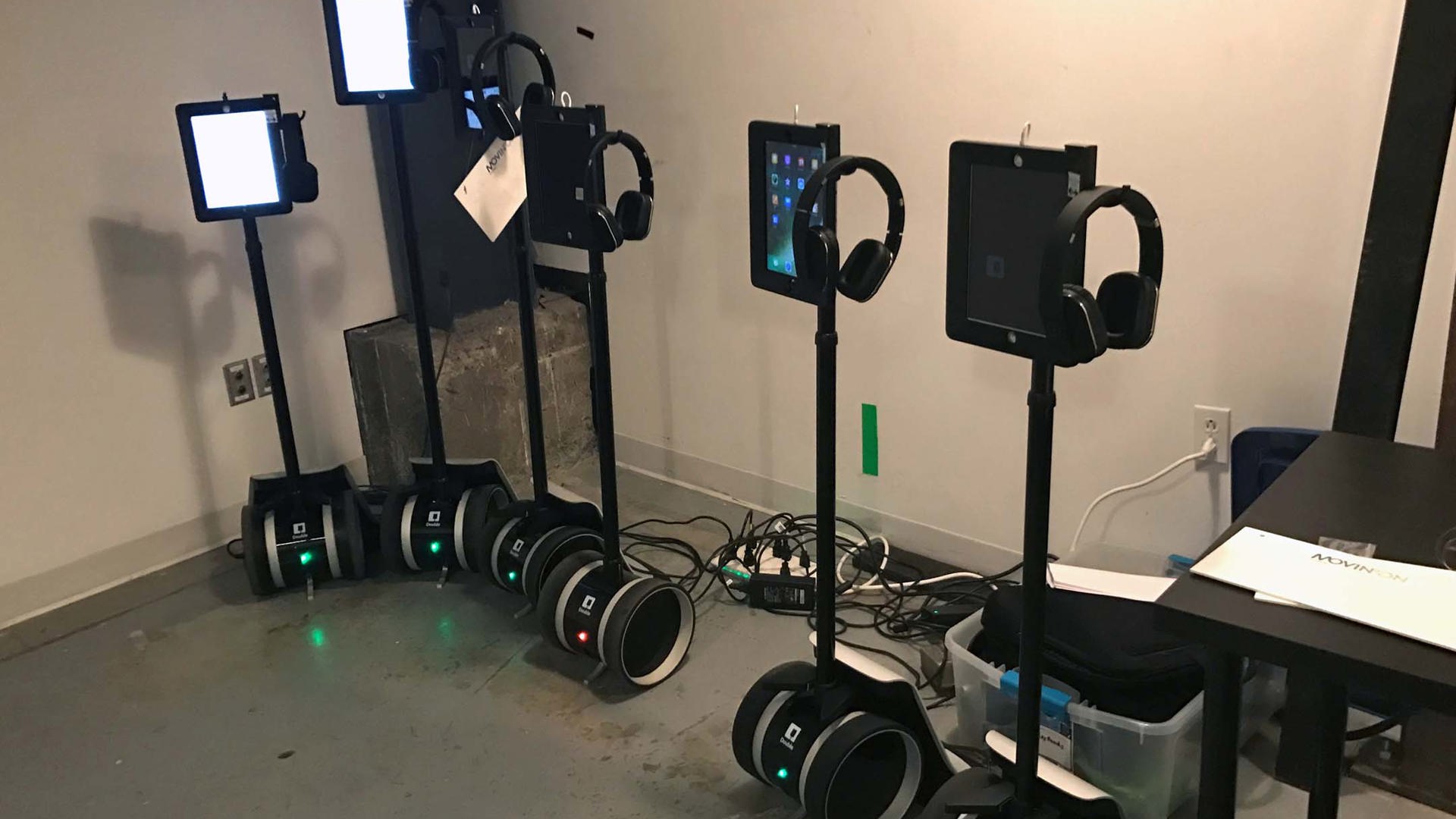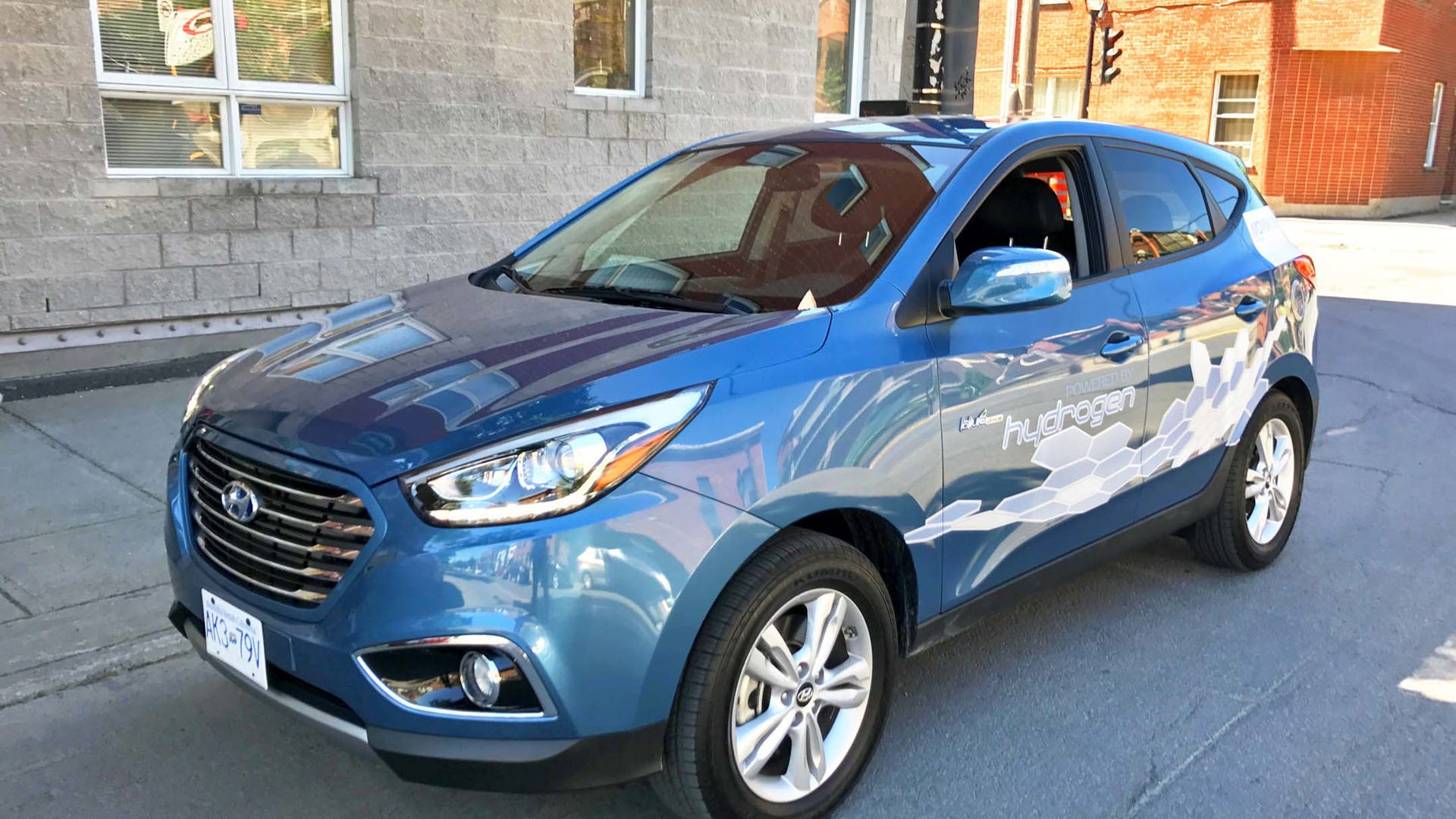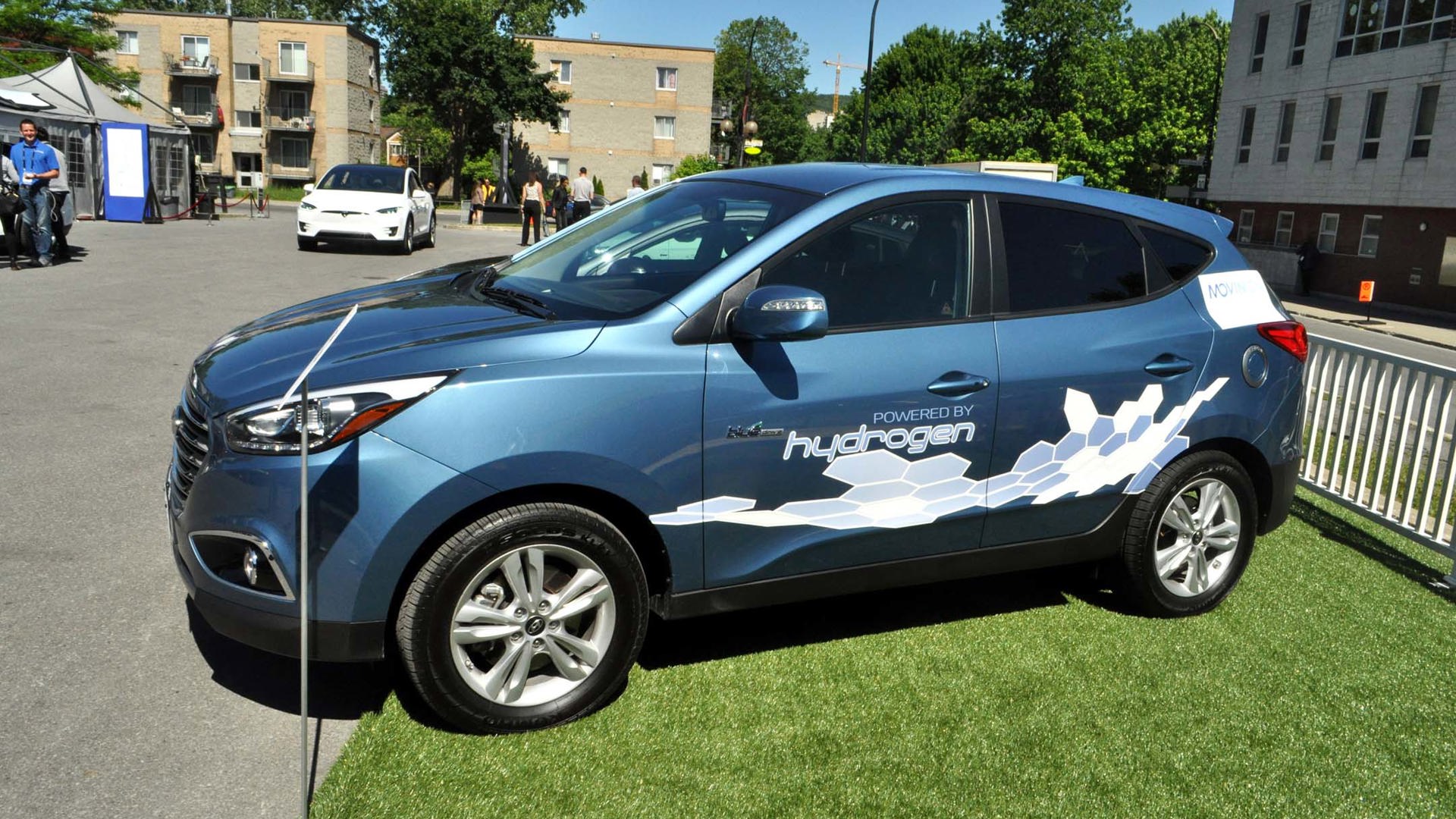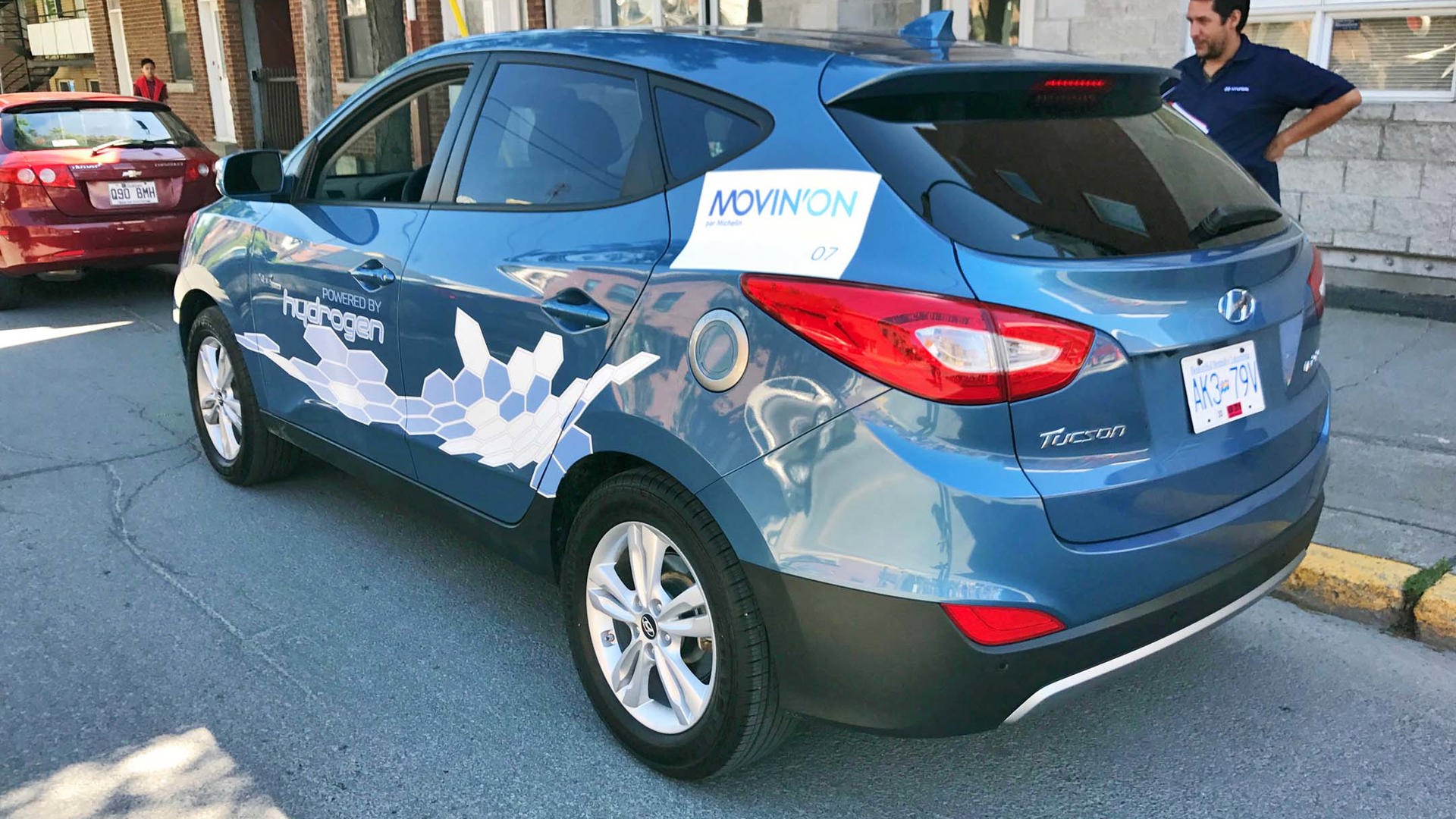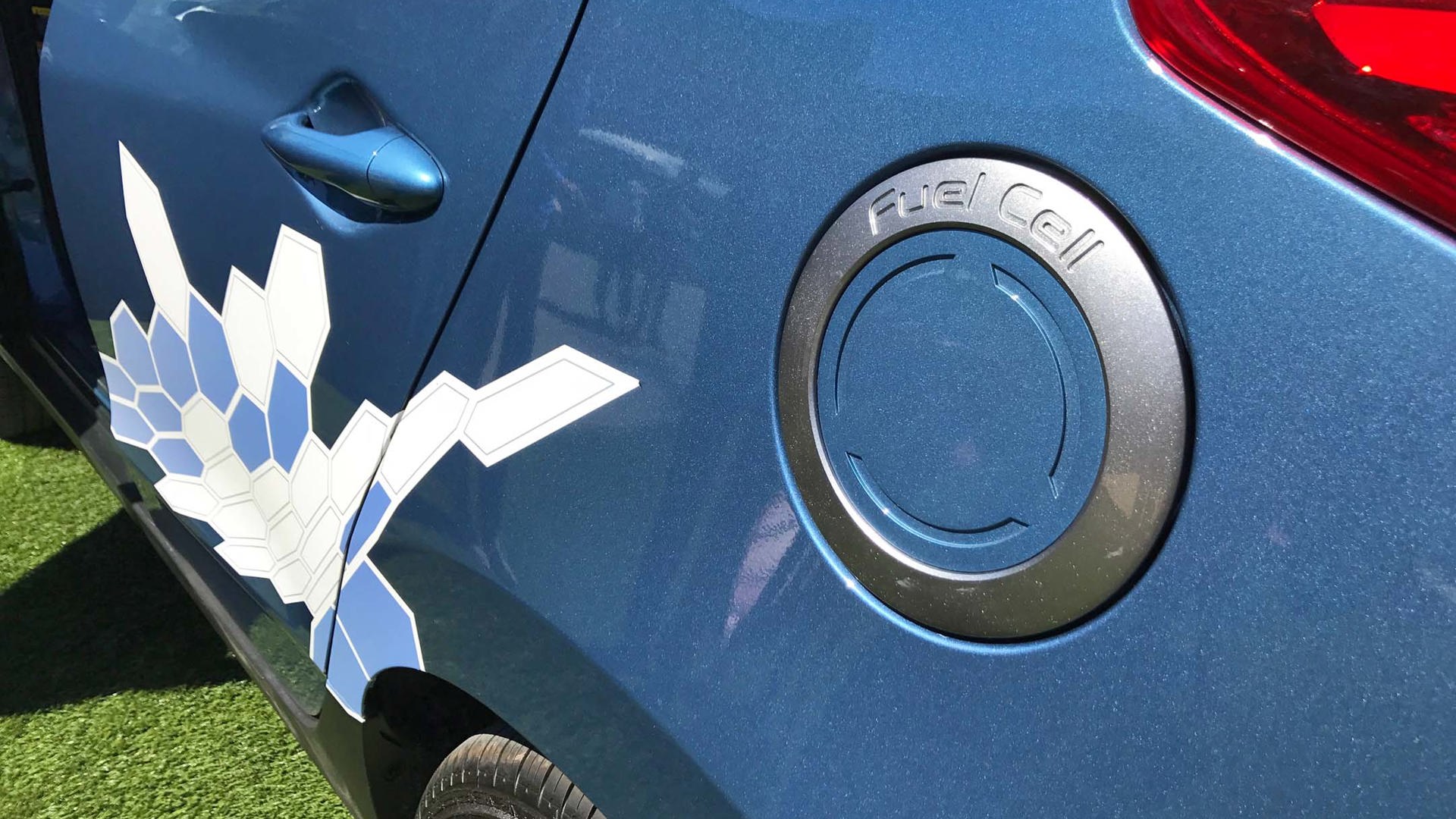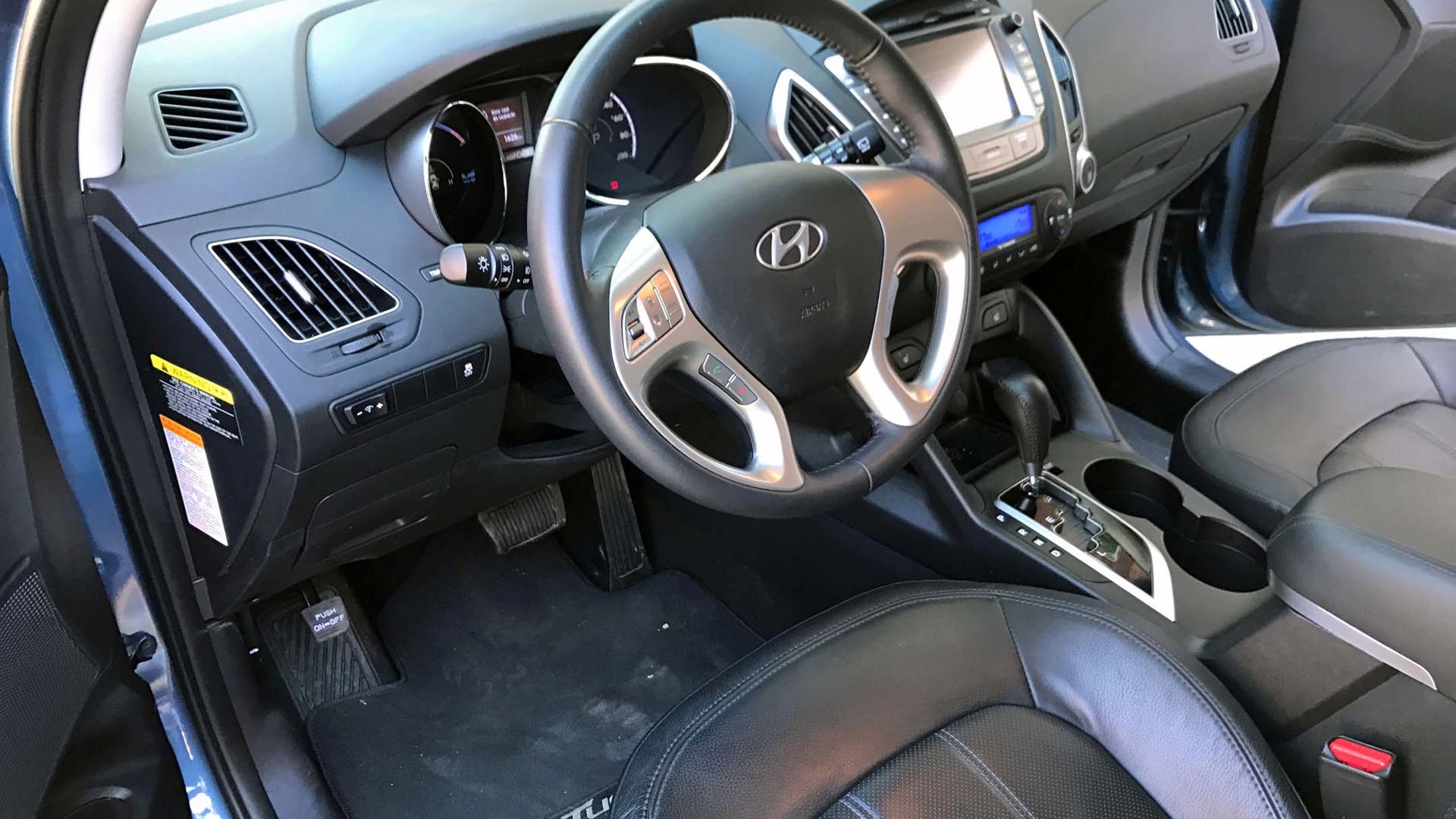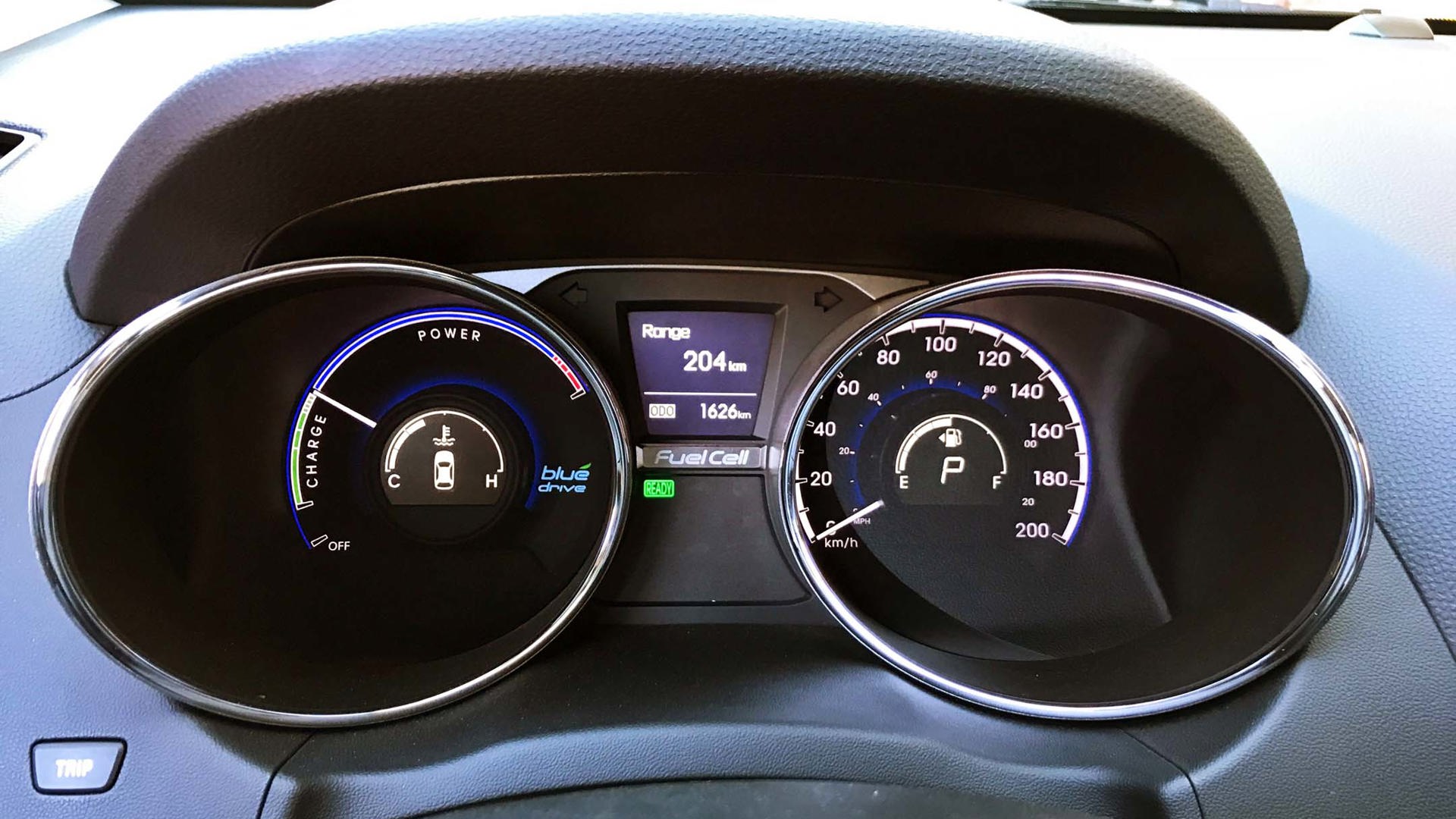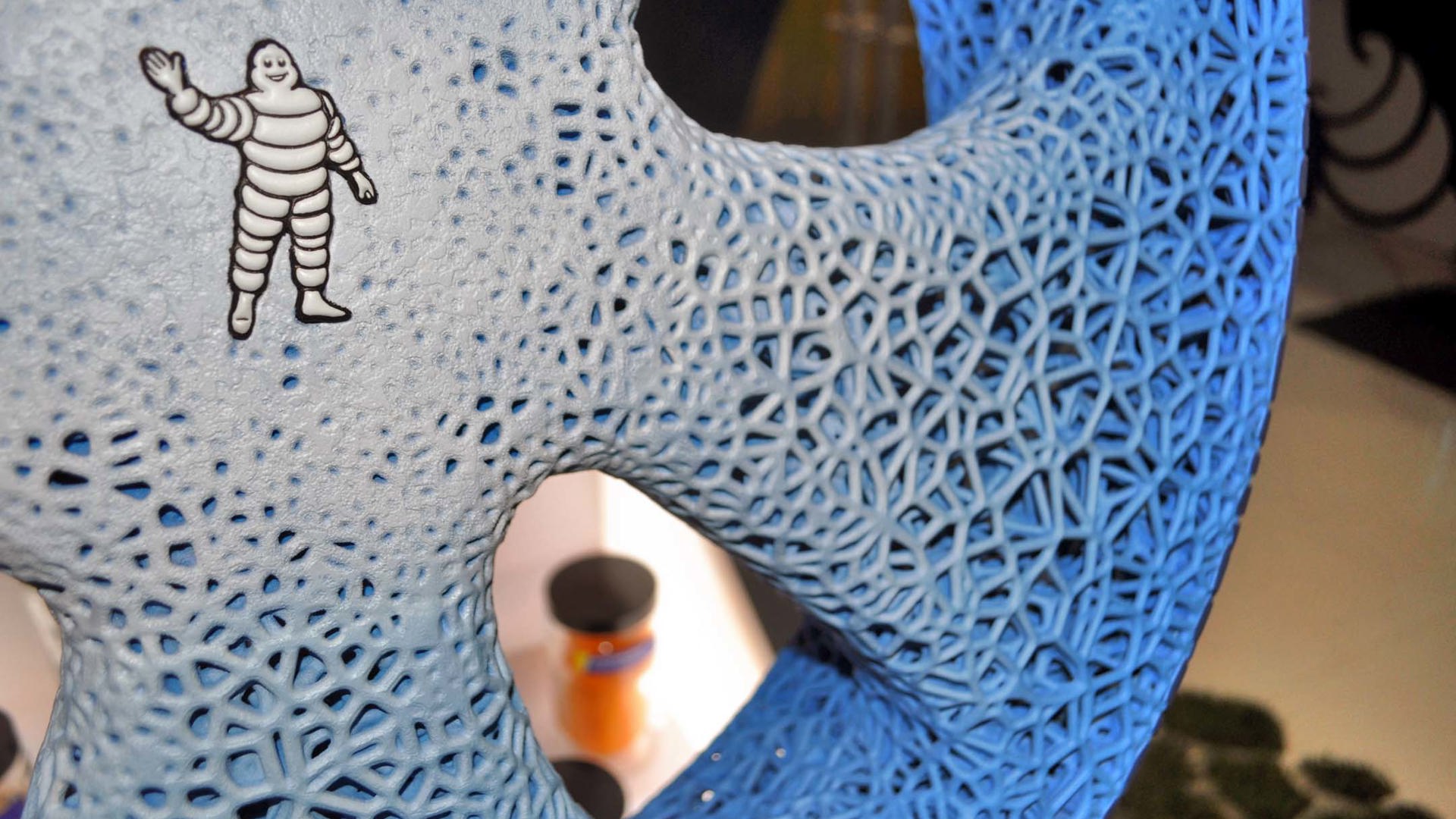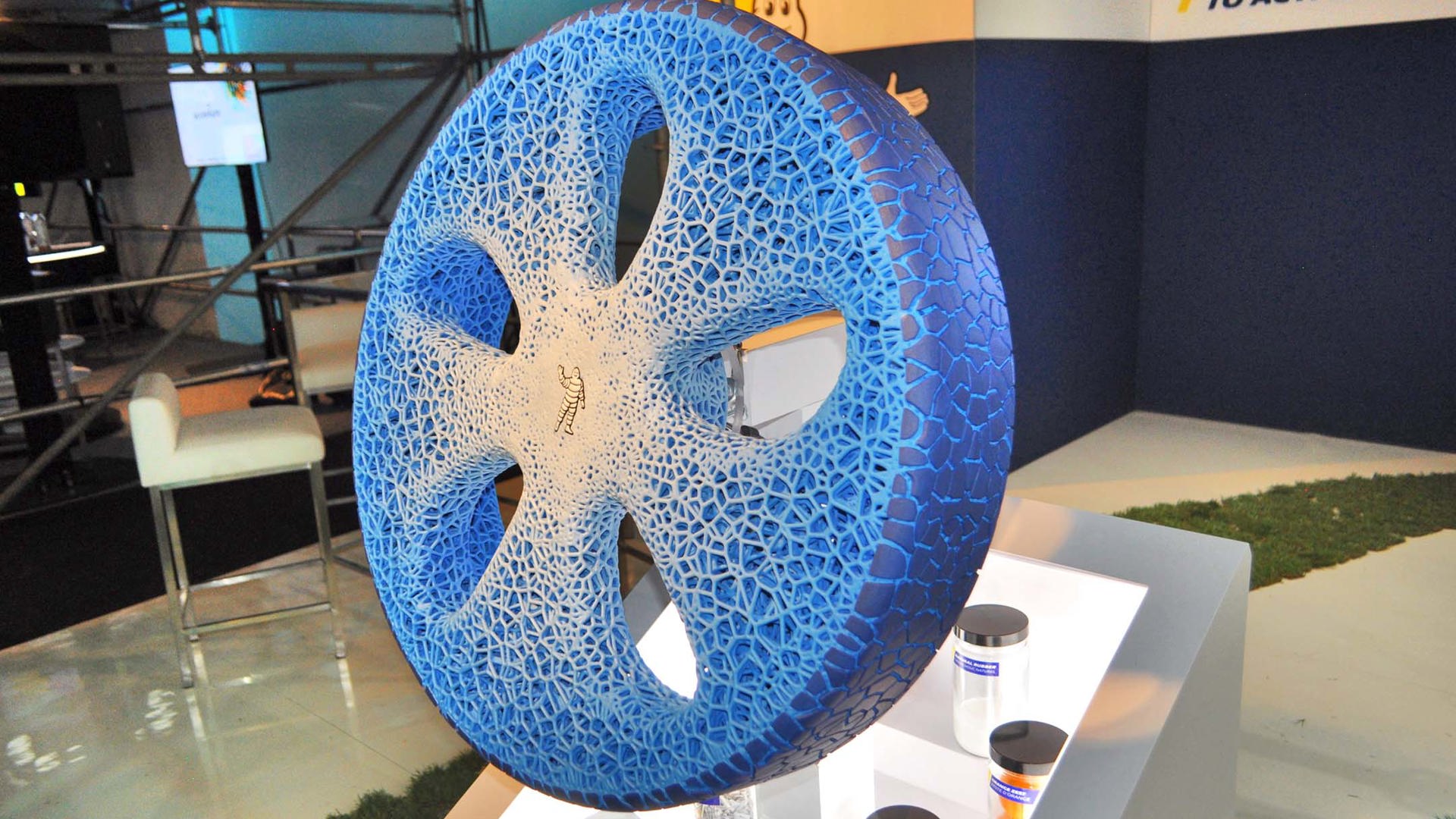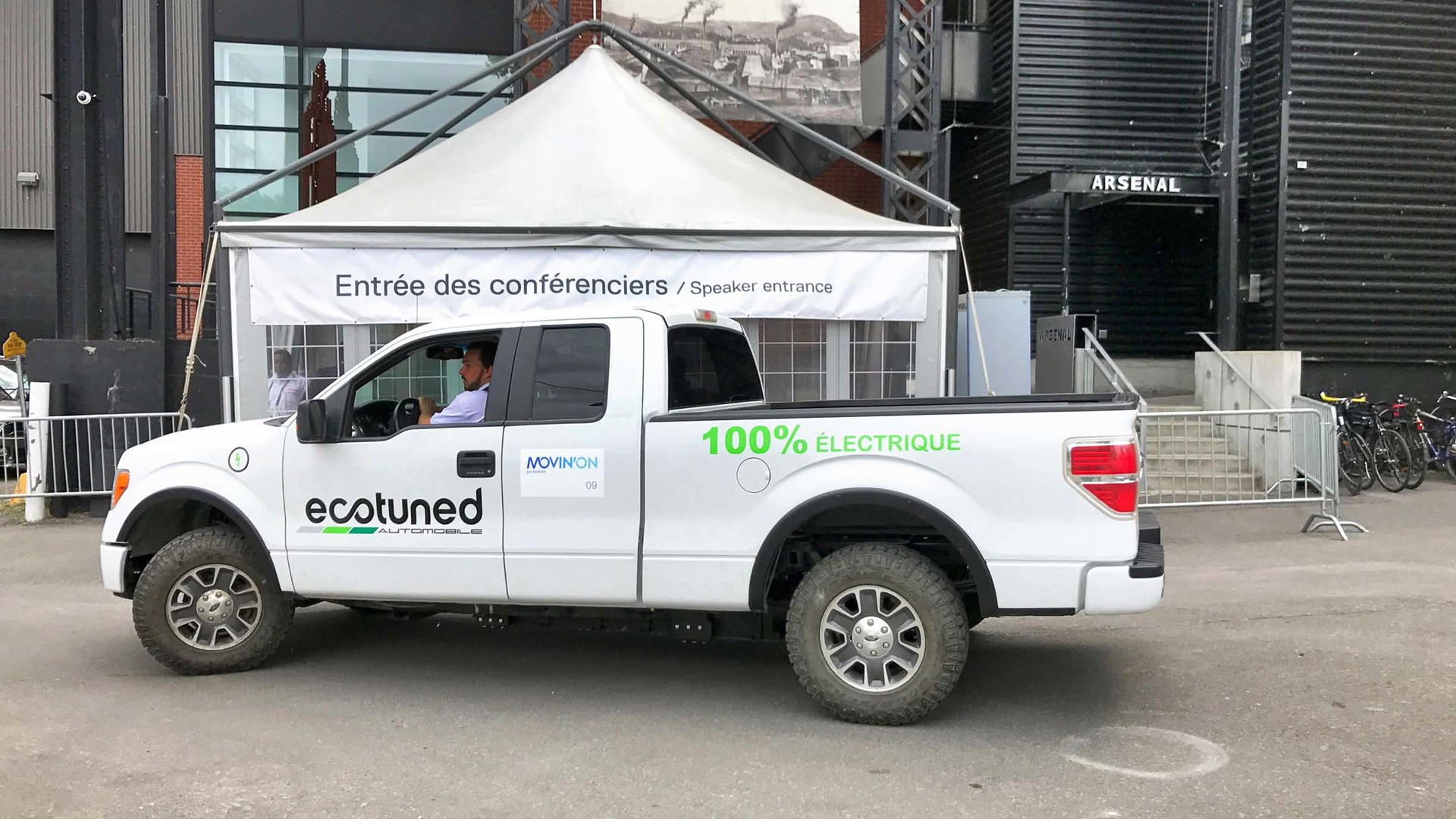MONTREAL, QC – Just like the emissions-free vehicles, advanced technology and efficiency strategies showcased within and just outside its walls, Michelin’s global gathering of future-minded politicians, company executives, researchers and media folks has evolved quite a bit itself. This year’s event was the first one in Canada, and also the first in which NGOs, green technology industry types, and any interested parties – even members of the public – could buy a ticket into the talk-filled, music-pumping waterfront gathering.
Michelin had put on 14 of its global Challenge Bibendum conferences, which had served as somewhat of a global “sustainability Olympics” every few years by pitting various prototype vehicles against each other for efficiency and practicality honours as well as various expert and panel talks. But this year’s event in Montreal was re-christened Movin’On, with the goal to go beyond showcasing green concept cars and dust-collecting academic studies, in order to showcase actual production cars (mostly zero emissions), plus turning all the research and available technology into action items towards implementing more sustainable mobility – either gradually, or by technical or societal leaps.
As such, after the mayor of Montreal along with senior provincial and federal ministers helped open the conference last week, there were continuous and ongoing presentations, meet-ups, conferences, panels, plus various production zero and low emissions vehicles on offer to sample and discuss. After a fascinating three days, here are a few of the highlights that were (likely) future shaping, controversial, environmentally or fiscally dubious, inspiring or just technologically interesting.
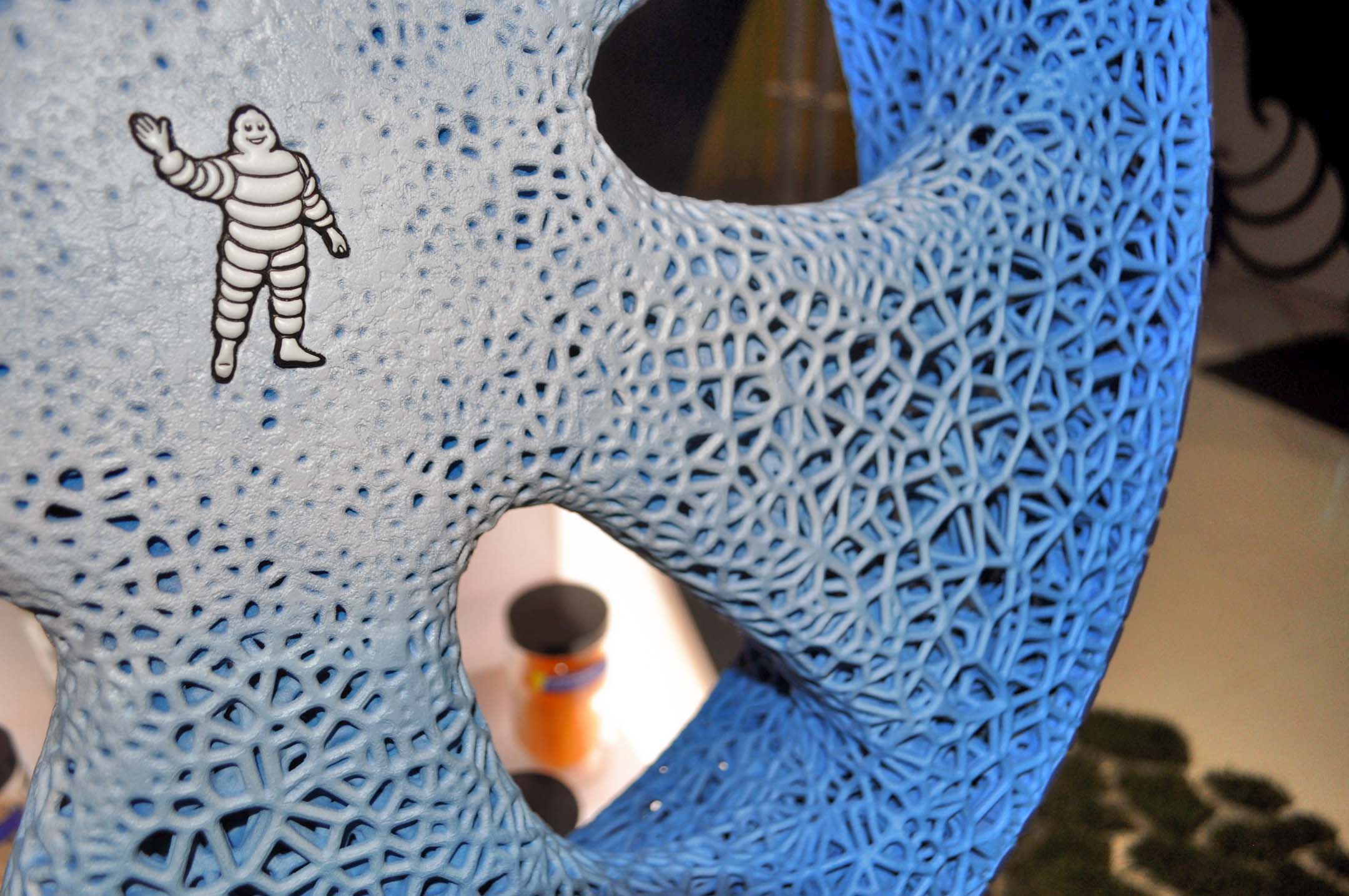 Michelin Vision Tire
Michelin Vision Tire
Michelin’s Vision tire concept the Mystique of the Internet of Things
Michelin’s big debut at the show was its mutant-blue Vision concept tire, a rechargeable and connected tire which is the French firm’s technical showcase here, and likely for years to come. Airless, biodegradable as well as bio-sourced, it uses the advantages of 3D printing to allow for customizable tread characteristics – not only upon ordering, but also on the move.
The vision for the Vision is that drivers could set their destination, and if the connected tires sense that their current tread pattern were not suitable for the journey – think driving up north or travelling from sunny locales to snowy mountain regions – drivers could stop at a designated fuelling/charging zone where special 3D printers would not only recharge the tires, but also retread them. The tires could then be modified with optimal patterns or materials with the journey and destination in mind, while owners grab a coffee, meal or just a stretch.
Yes, tires are moving towards joining the world of the Internet of Things.
“It’s not a dream – it’s not for tomorrow, but it’s for 10 or 20 years from now – so it’s very important to orient the company for that reality down the road,” said Claire Dorland-Clauzel, Michelin’s global vice president of sustainable development. “To push people, you have to have dreams.”
Essentially, the Vision is the shape-shifting Mystique of future car tires, able to adapt its skin to suit the conditions, just like the blue-hued X-Men villain.
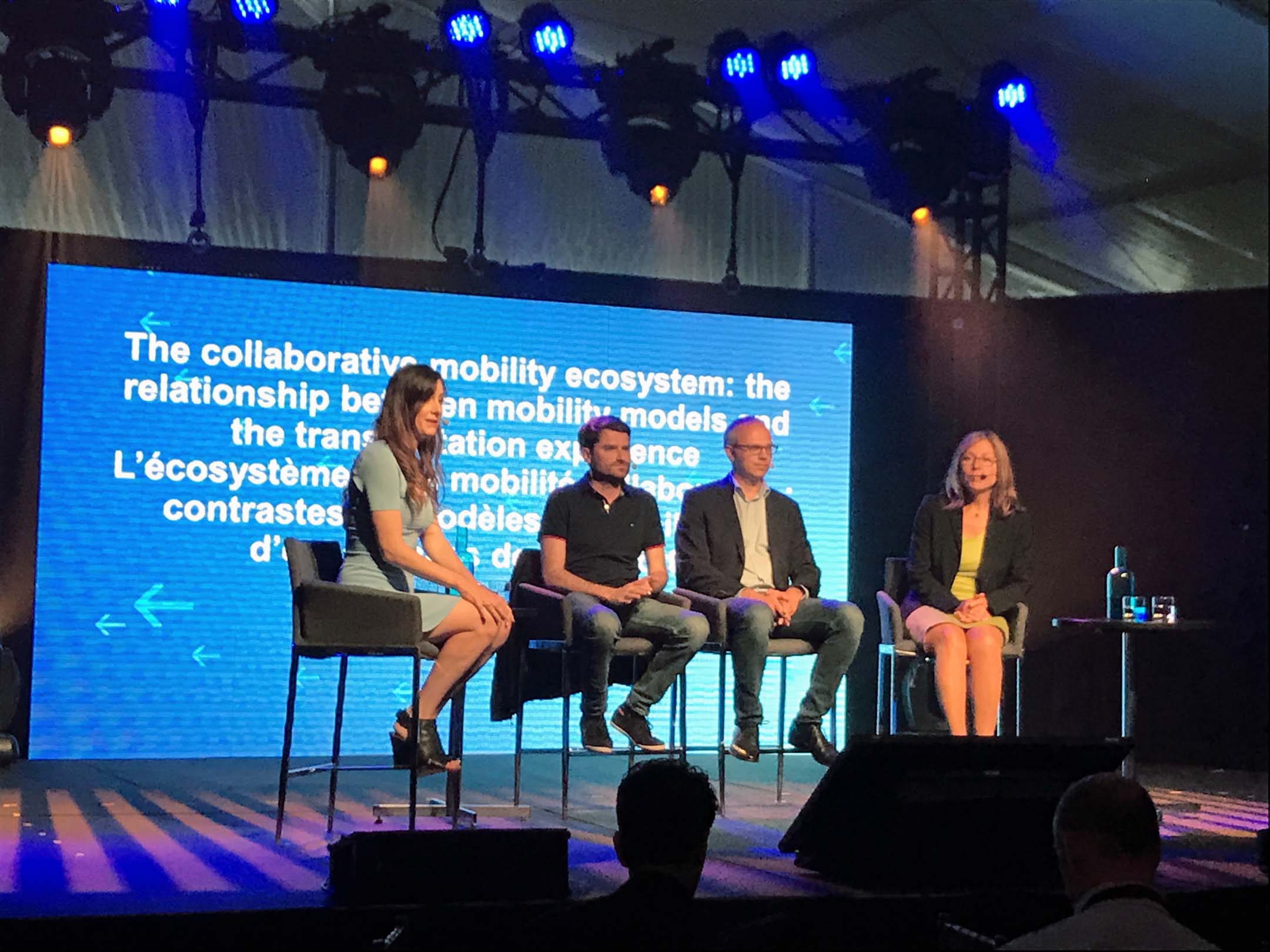 Movin’On Ridesharing Panel
Movin’On Ridesharing Panel
Car-sharing grows, even in Canada
A panel on car-sharing as a means of dealing with increasing urban density suggested that growing cities would not be able to sustain similar rates of car ownership, especially in city centres, and car companies are already positioning themselves into the car-sharing market. Unlike the taxi-like ride-sharing services of Uber, some car-sharing services work more like an AirBnB for vehicles: use an app to rent a runaround car to drive for a few hours, or a larger seven-seat SUV to take the family away for a weekend or week-long holiday, and not get stuck with the vehicle payments, fuel and insurance bills for the rest of the year when you don’t need the extra size or capability.
Manufacturers are starting to embrace this future, said BMW’s global director of sustainability Ursula Mathar, who joined on the panel Cedric Mathieu, the Canadian director of car-sharing service Turo.com, which is now operating in larger cities in Ontario, Quebec and Alberta as well as all over the US.
“In the end people are driving less kilometres, and are really reducing the number of cars they own in cities,” said Mathar, linking the global trend of increased urbanization with a small but growing company shift in BMW’s corporate strategy towards becoming a transportation company, and not necessarily only a car company.
That said, the BMW i8 plug-in sports cars the company sells were amongst the most popular vehicles available to test at the event, with Mathar later happily posing with the three-cylinder Audi R8 rival, while excited conference participants waited for a brief turn behind the futuristic exotic’s steering wheel.
For Mathieu, who moved from Silicon Valley to lead the expansion of car-sharing giant Turo (formerly RelayRides.com) into Canada in April 2016, the country has so far embraced the peer-to-peer car-sharing service.
“The mission is really to put good cars to better use,” Mathieu said. “Overcoming the fear that renting out your car is weird or dangerous is really the misconception around what we’re talking about,” saying in a later interview that not only car owners but even dealerships could benefit from better utilizing cars that sit in lots for the vast majority of the time.
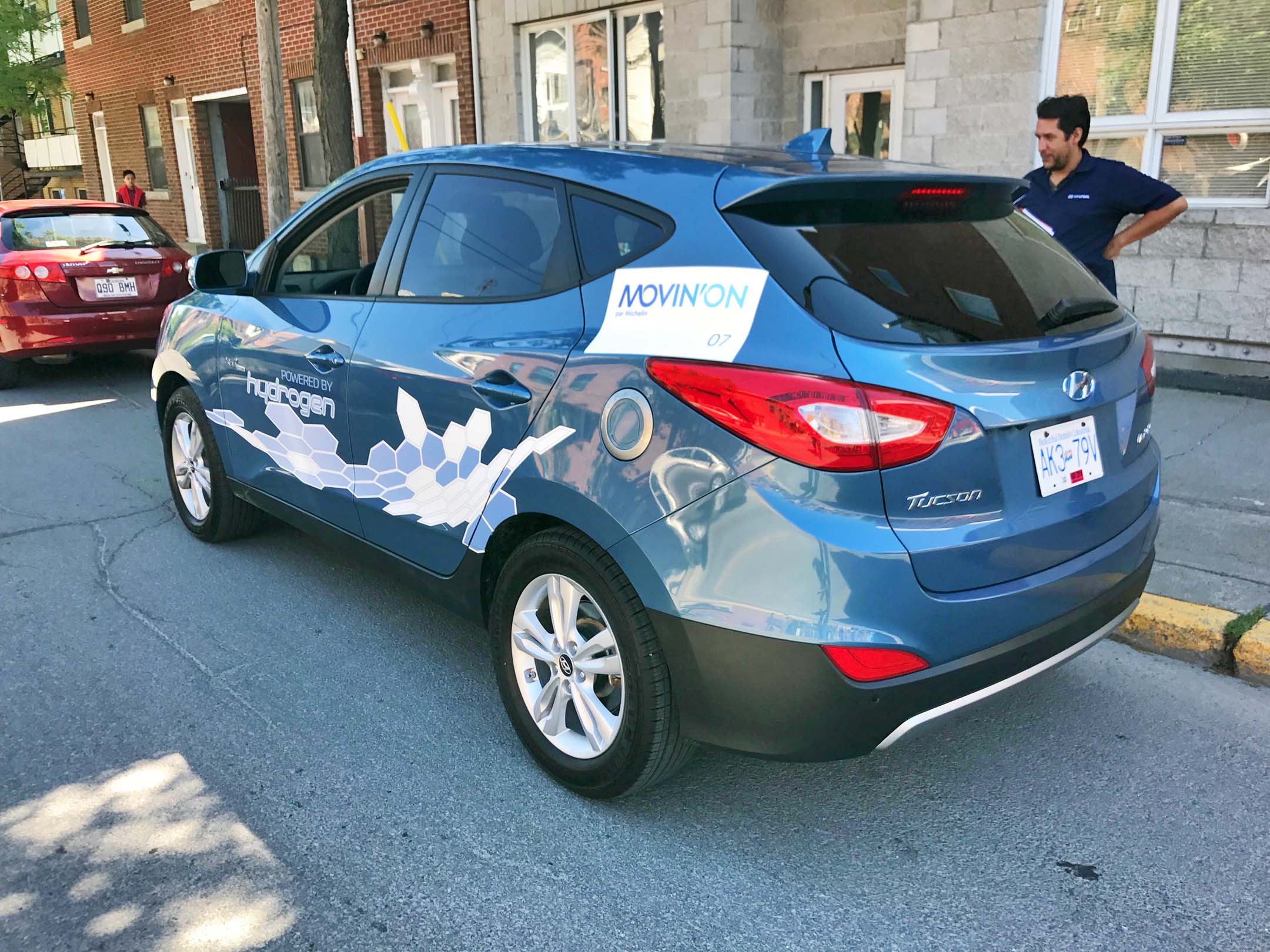 Hyundai Tucson FCEV
Hyundai Tucson FCEV
EV purveyor Hyundai favours fuel cells over batteries
It’s not every day one hears the president of a car company say that the products they don’t sell are better than the ones they do; but that’s essentially what Hyundai Canada president Don Romano proposed in his presentation in Montreal. The company offers hybrid, plug-in hybrid, and battery-electric vehicles (BEV) right now, and has leased a handful (literally, about five) of its Tucson hydrogen fuel cell–electric vehicles in Canada, due to the nearly non-existent hydrogen fuelling infrastructure.
“We’re at the eight-track-player level when it comes to electrification,” argued Romano, whose Korean company is launching its first fully electric Ioniq vehicle in three provinces for 2017, six years after Nissan and GM created the mainstream plug-in electric market with the release of the Leaf and Volt, respectively, in 2011 in Canada. “The biggest problems with electrification are range and recharge time for BEVs,” noting that no BEV on the market in 2016 could make a trip from Toronto to Montreal in the winter.
He argued that fuel cells offer a longer range, quick refuelling, limited weather impact while maintaining the BEV advantages of zero tailpipe emissions, near-silent operation, and instant torque, pointing to the Tuscon FCEV present at the event as evidence that fuel cells would be a viable option if the hydrogen fuelling infrastructure to fuel them were available to the Canadian public.
His sense of frustration is palpable in that battery electric vehicles have obviously taken the lead as the zero-emissions vehicles of choice; in contrast, currently the only public hydrogen station is in BC, where most Tuscon FCEVs have been leased in what is largely still a limited-production development project.
That lack of relatively expensive hydrogen fuelling infrastructure is what has held consumer fuel-cell vehicles back since the BC-based Ballard Power heyday, when its stock price peaked in 2000, with various Michelin Challenge Bibendums around then full of prototype fuel-cell vehicles that seemed on the verge of market launch once the infrastructure caught up. It never did, and though carmakers have advanced the vehicles and sold a few in the US since then, none have seemed willing to invest in hydrogen infrastructure to the same degree as Tesla has in its Supercharger battery quick-charging network.
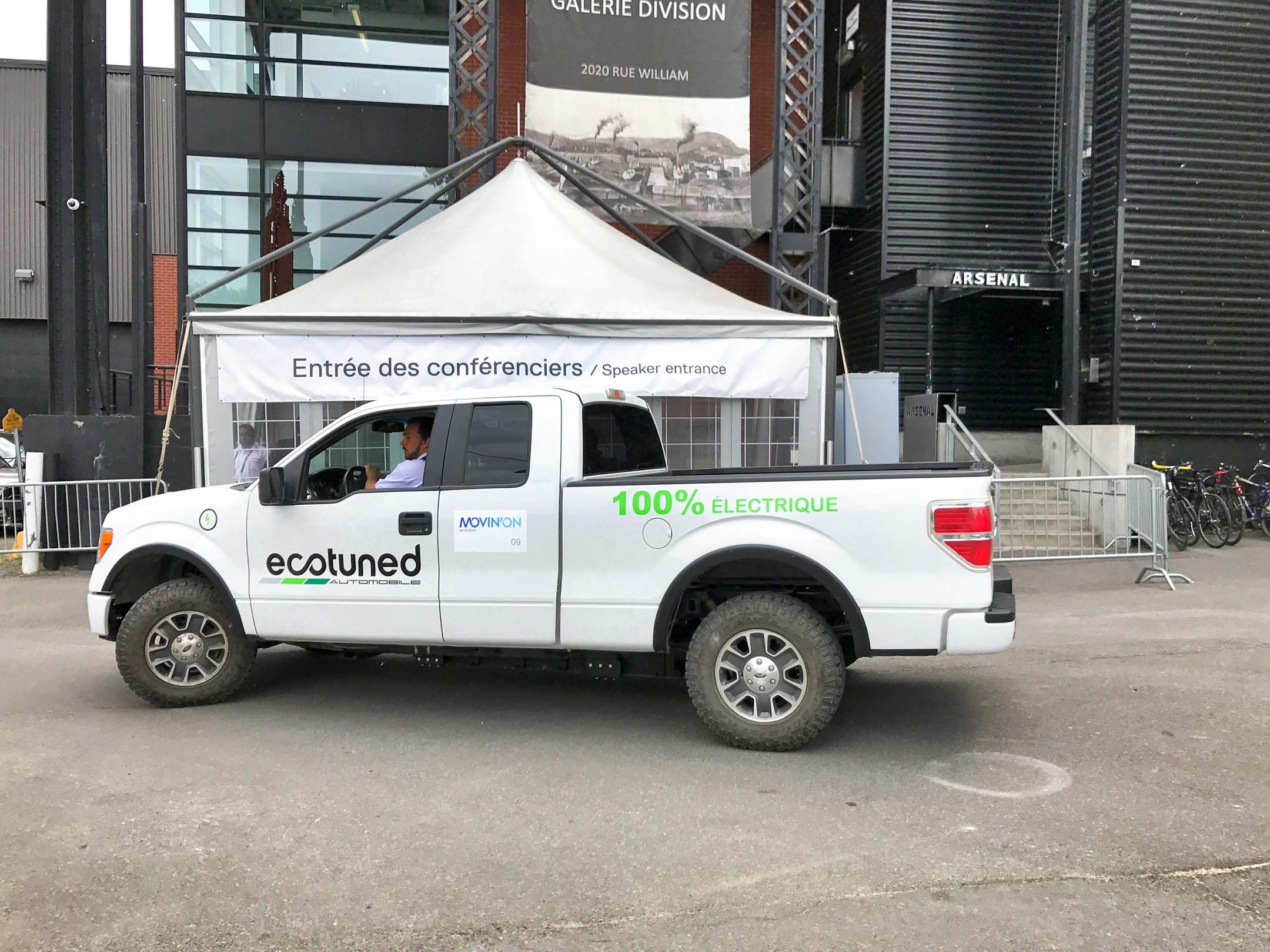 Movin’On Ecotuned Pick-Up Truck
Movin’On Ecotuned Pick-Up Truck
Quebec company building pickup electrification kit for fleet owners
Similar to those prototypes from about 20 years ago, also available to sample at the event were prototypes of used Ford F-150 pickups converted to fully electric F-150 BEVs from a Montreal-based company called EcoTuned. The small startup starts by ripping out the engine, fuel tanks, transmission and other internal combustion driveline components from used pickup trucks (currently F-150s, with plans for other common pickups as well), and installs 48 kWh worth of batteries and a two-speed transmission meant to offer urban fleet owners a much greener and more economical-to-run commercial truck option.
The truck currently offers roughly 140 km of range, but can go up to 350 km with larger battery sizes, said the company. EcoTuned Founder and CEO Andy Ta wouldn’t disclose when the vehicles were slated to hit the commercial market, or how much the company would charge for the conversion, but unconfirmed rumours at the event suggested roughly $25,000–$40,000, though it was unclear whether that included the cost of the used pickup truck as well.
No plans as of yet for a consumer version, said Ta.
Pilot who circumnavigated world in solar plane a show star
One of the stars of the show was a talk by Bertrand Piccard, the explorer, psychiatrist and visionary “aeronaut” who founded Solar Impulse, and who helped pilot the fuel-less Solar Impulse 2 more than 40,000 km – powered only by the sun – flying day and night, around the world.
He spoke about the need for all industries to not only study but push to implement clean technologies.
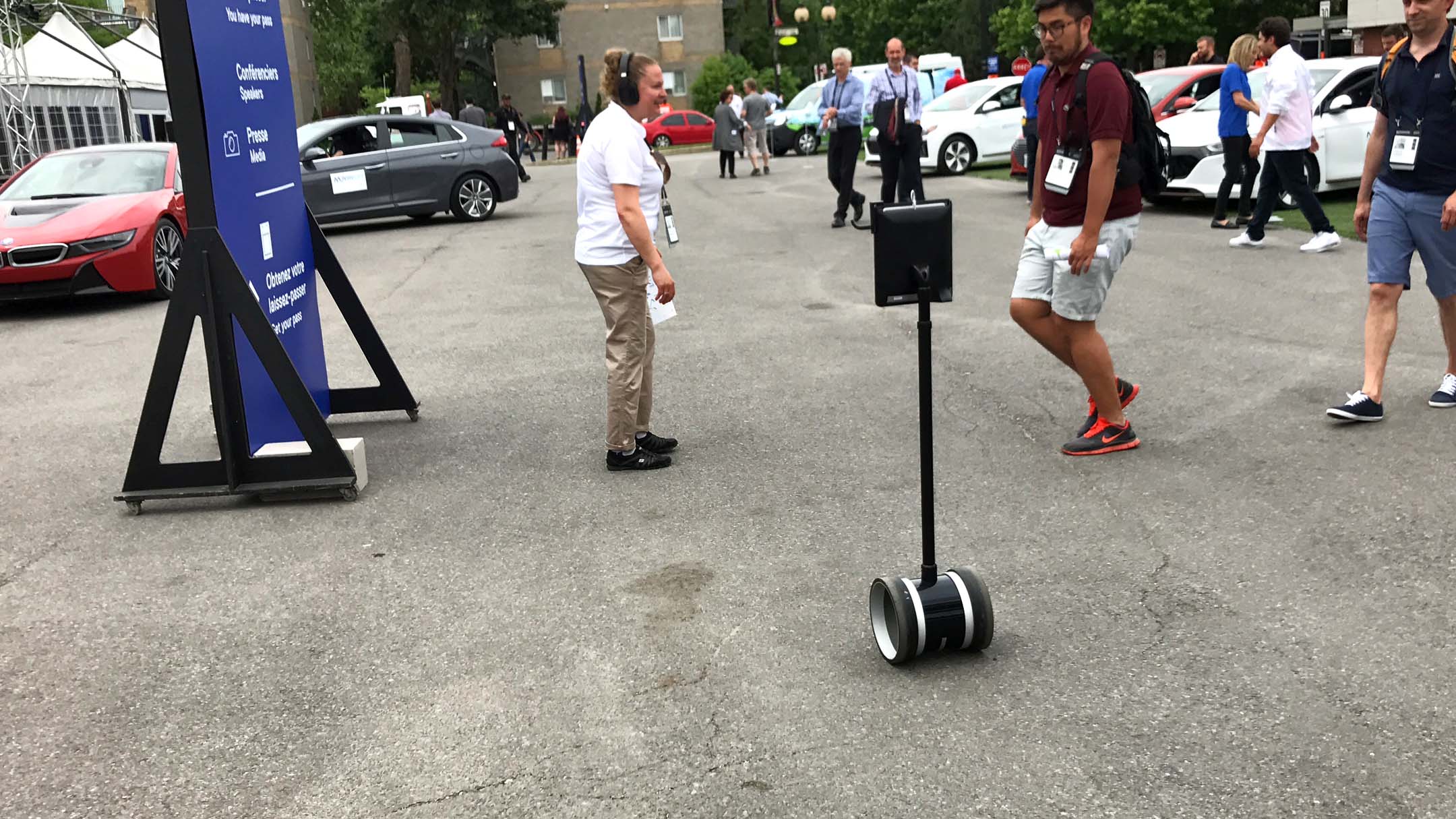 Sheldon – remote presence tablet “lollipop”
Sheldon – remote presence tablet “lollipop”
Remote folks checked out action with roaming tablet lollipops
Some Michelin employees who didn’t attend the event had the opportunity to virtually roam the grounds and interact with attendees, via tablet “lollipops” on wheels that they could control from their computer.
Each rolling tablet had an on-site minder with headphones and a microphone that would “translate” the virtual attendee’s comments to live folks. This meant that communication with attendees from other countries or Michelin offices was not quite as seamless as on the Big Bang Theory, but provided an additional high-tech ambience to the event – and overcame stairs and doorknobs.
